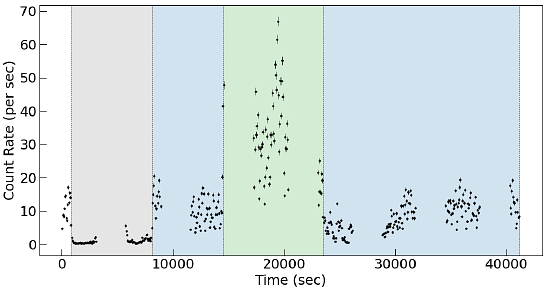Variability study of classical supergiant X-ray binary 4U 1907+09 using NuSTAR

Variability study of classical supergiant X-ray binary 4U 1907+09 using NuSTAR
Raj Kumara, Sayantan Bhattacharya, Sudip Bhattacharyya, Subir Bhattacharyyaa
AbstractWe investigate the X-ray variability of the supergiant X-ray binary 4U 1907+09 using the new NuSTAR observation of 2024. The source had a relatively stable flux level during previous NuSTAR observations, but the flux varied significantly during the current one. The light curve exhibits dips (off-state) and flares (on-state). The phase-coherent timing analysis during the on-state yields a pulse period of $443.99(4)~\mathrm{s}$, showing the pulsar's continued spin-down. The pulse profiles show an asymmetric double-peaked structure with a phase separation of 0.47 between the two peaks. A cyclotron resonance scattering feature (CRSF) is also detected at $\sim 17.6~\mathrm{keV}$, along with its harmonic at $\sim 38~\mathrm{keV}$, persisting across all flux states. Flux-resolved spectroscopy reveals that the CRSF remains constant despite a 25-fold change in flux. The spectral parameters like photon index and e-fold energy are out of phase with the pulse shape, whereas cutoff energy is in phase with the pulse shape. The source's luminosity during the on-state is $2.85 \times 10^{35}~\mathrm{erg~s^{-1}}$, consistent with a "pencil" beam radiation pattern expected at this flux level from a collisionless gas-mediated shock. These results offer further insights into the accretion dynamics and magnetic field geometry of this system.